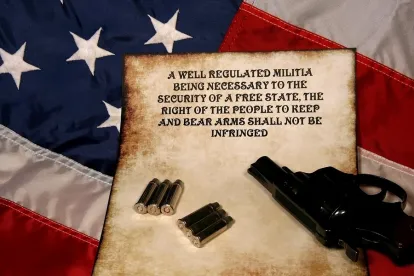In Oil States Energy Services, LLC v. Greene’s Energy Group, LLC, et al the Supreme Court found that inter partes review is constitutional under Article III and the Seventh Amendment of the Constitution in a 7-2 opinion delivered by Justice Thomas.
The Court determined that inter partes review falls “squarely” within the public rights doctrine. In making that determination, the Court compared the grant of a patent to inter partes review, one happening up front, the grant, and the other happening later, inter partes review. The grant of a patent, according to the Court, has been long recognized as a matter involving public, not private, rights. Accordingly, granting patents is one of the constitutional functions that can be carried out by “the executive or legislative departments” without judicial determination. Thus, the powers to grant a patent reside within Article I, not Article III. So when the PTO adjudicates the patentability of inventions, it is exercising the executive power, not the judicial power.
Inter partes review too falls on the public rights side of the line. Inter partes review involves the same basic matter as the grant of a patent but only later in time, a sort of second look at the patent, as it were, and involves the same statutory rights as the grant of a patent. According to the Court, the primary distinction between inter partes review and the initial grant of a patent is that inter partes review occurs after the patent has issued and that temporal distinction is a distinction without a difference. Thus, in an inter partes review, patents remain subject to the Board’s authority to cancel outside of an Article III court.
The magic in the opinion really happens when the Court compares the grant of patents to franchises, a very public feeling term. The Court addressed the argument that patents were a sort of a property right by underscoring the idea that patents convey only a specific type of property right, those of a public franchise, and that patents are entitled to protection as any other property, consisting of a franchise. Thus, Congress can grant a franchise that permits a company to erect a toll bridge, but qualify the grant by reserving its authority to revoke or amend the franchise. Even after the bridge is built, the Government can exercise its reserved authority through legislation or an administrative proceeding. The same is true for franchises that permit companies to build railroads or telegraph lines. The notion that patent rights, such as those encountered in an inter partes review, were only entitled to a franchise-type level of protection guaranteed the result that patent rights in an inter partes review were only entitled to protection under a statutory scheme, that of Article I.
The Court also rejected the argument that inter partes review violated Article III because it shared salient characteristics associated with the exercise of judicial power. According to the Court, discovery, depositions, and cross- examination of witnesses, introduction of evidence and objections based on the Federal Rules of Evidence, an adversarial hearing before the Board and calling the hearing a “trial” and the Board’s final decision a “judgment,” do not necessarily mean that an agency is using Court-like procedures and exercising judicial powers. Nor did the fact that an administrative adjudication was final and binding on an individual act to make it an exercise of the judicial power. A “looks like” test is not necessarily used to determine if an adjudication has improperly occurred outside of an Article III court.
The Court stressed the narrowness of their holding. In particular, the Court noted that they were not addressing whether other matters, such as infringement, required an Article III court. The Court also noted that their decision should not be misconstrued as suggesting that patents are not property for purposes of the Due Process Clause or the Takings Clause.
The Court finally addressed the challenge of inter partes review under the Seventh Amendment. According to the Court, the rejection of the Article III challenge resolves its Seventh Amendment challenge because inter partes review is a matter that Congress can properly assign to the PTO and not necessarily one that requires a jury.
Justice Breyer, Justice Ginsburg, and Justice Sotomayer concurred, noting that neither Article III nor the Seventh Amendment necessarily bar matters involving private rights from being adjudicated in anything other than by Article III courts. The concurrence stressed that sometimes even those rights may be adjudicated by agencies.
Justice Gorsuch and Justice Roberts dissented. According to the dissent, patentees can only be divested of patent rights by Article III judges. Disputing the Court’s equation of grant and revocation, the dissent argued that just because one gives a gift, such as a patent, doesn’t mean one can forever enjoy the right to reclaim it. Such a stance is ultimately a retreat from Article III’s guarantees.




 />i
/>i

